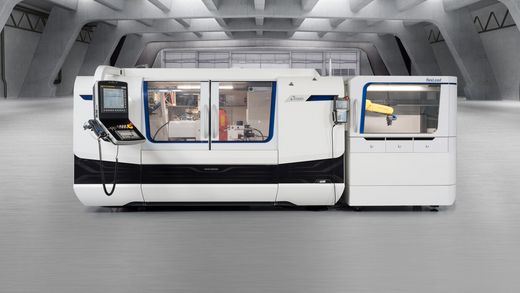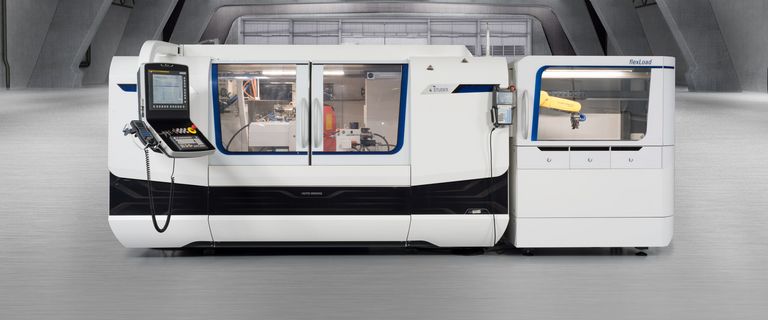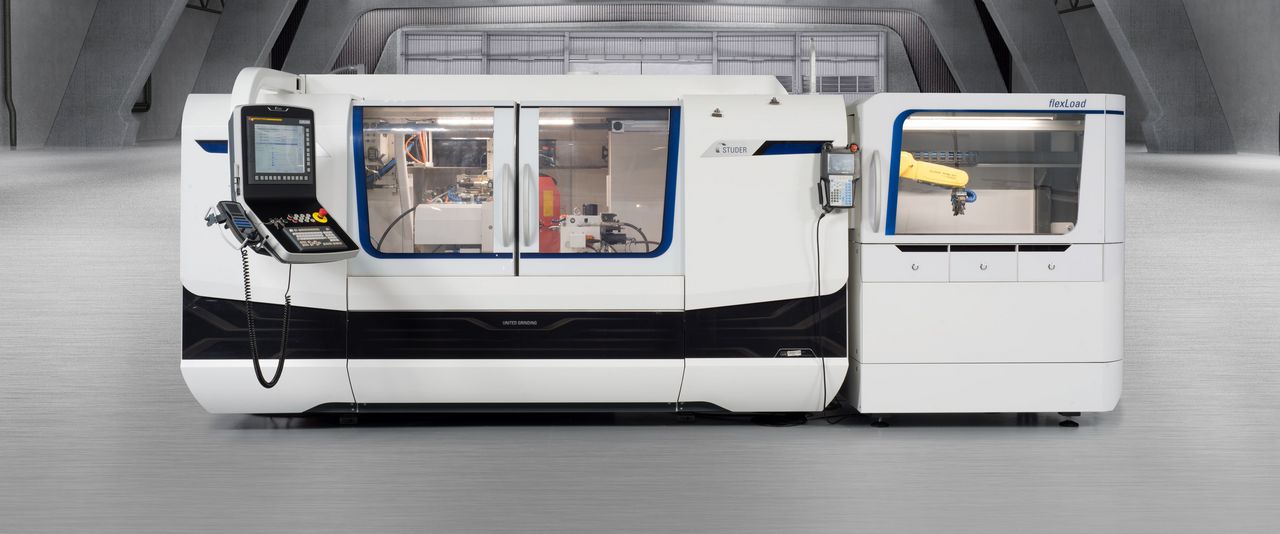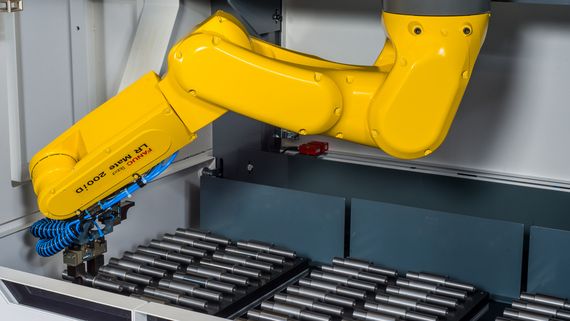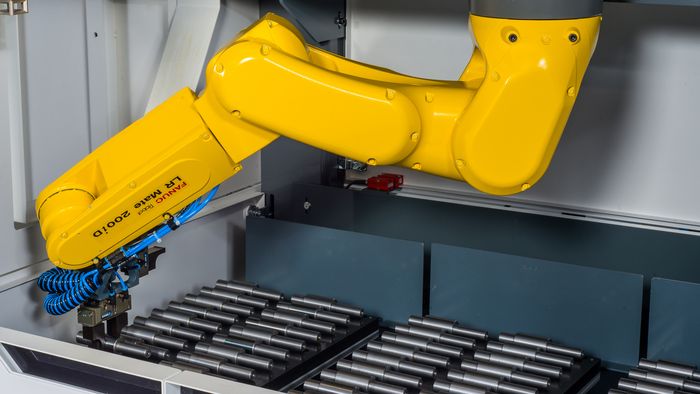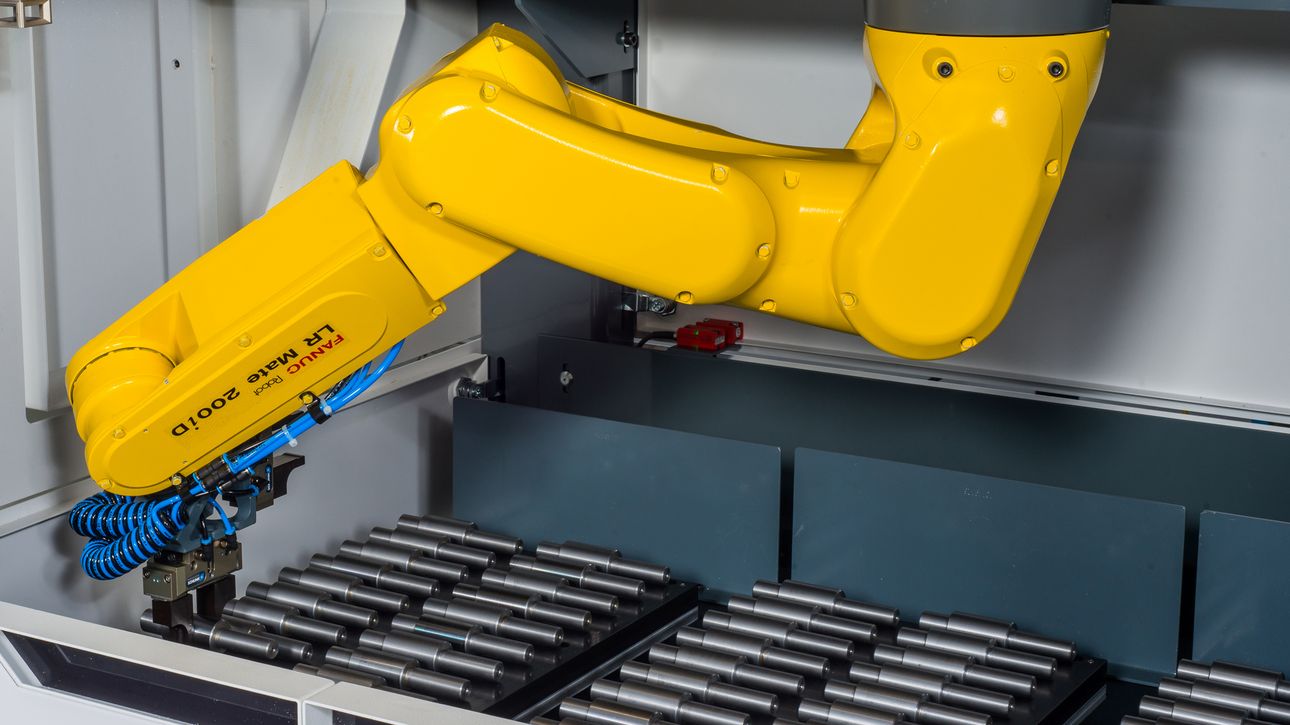Highly efficient production with automation.
The articulated-arm robot accurately moves around, removes the finished workpiece with the double gripper, inserts the next one and – while grinding is going on next door – exchanges the processed workpiece with a blank in the adjacent cell. All this is done without human intervention in the flexLoad loading system on a STUDER S33.
Automation reduces the error rate, accelerates the process, improves quality and protects the employees who then can fully concentrate on controlling the machine and are not subject to ergonomic constraints and physical stress.
The UNITED GRINDING Group corporate brands have been offering different variants of automated loaders and workpiece changers for many years. As an example, different grinding wheel and electrode changers or various tool loading systems are available for WALTER grinding and eroding machines – from top loaders to robot loaders. Changing tools and workpieces is a very challenging process. Depending on the geometry and weight of parts, varying gripping positions and operations are necessary, which, depending on the application, also means that different tolerance ranges are also required. After all, the manufacturing spectrum ranges from the production of small injection nozzles to large bearings for crankshafts in container ships.
The automatic workpiece handling can often be managed using integrated gantry loaders, for example with the loading systems from STUDER: smartLoad as the standard solution can be adapted to the customers' needs. easyLoad is ideally suitable for larger workpieces, ecoLoad is a cost-efficient and compact automation solution in which workpieces can either be picked up from a carousel magazine or individually from a shuttle. The integrated programming function in the machine control and the teach-in feature simplify programming and positioning of the loader.
Automation solutions offer you as customers a host of benefits.
Benefits of automation
The benefits of automation go far beyond automatic handling: a higher machine utilization and increased production autonomy, for instance during night shifts or on weekends; leaner processes that cover several stations and integrate different process steps. Automation additionally offers a host of other benefits:
- Parallel processes: While workpieces are being processed in one station, parts can simultaneously be cleaned at a different station while other parts are automatically measured at yet another station. In the MÄGERLE MFP 50 grinding centers, for example, stations for grinding, measuring, loading and unloading can be accommodated.
- Statistical evaluations:
- Extensive evaluations are possible to identify systematic errors, e.g. the influence of the ambient temperature or vibrations caused by the system. Thanks to automation the cycle is ensured, the costs more calculable, and the availability of the system is increased.
- Protecting machines: A loading robot can repeatedly position heavy workpieces more precisely than humans.
- Effective use of specialists: The employees’ capacities are not limited with routine tasks – they can concentrate on safeguarding procedures and solving problems.
If a process is automated, it must demonstrate a certain process capability. Conversely, this means that automating a process also improves a process. Coupled with the standardization and repeatability, which are prerequisites for the automation of processes, this leads to higher quality – for the benefit of the entire production.





